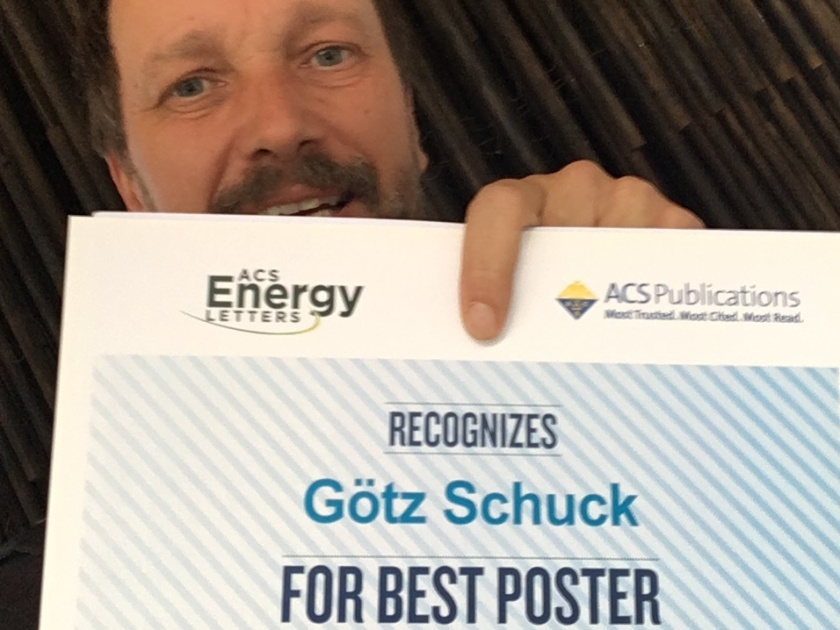Poster award for Götz Schuck

Dr. Götz Schuck was awarded a poster prize at the PSCO-19 © privat/HZB
At the 5th International Conference on Perovskite Solar Cells and Optoelectronics (PSCO-19) Dr. Götz Schuck received a prize for his poster contribution. The international conference took place from 30.09.2019 to 02.10.2019 in Lausanne, Switzerland.
Halide Perovskites are outstanding candidates for extremely efficient and yet cost-effective solar cells. In the most studied perovskite variant, the lattice sites of a perovskite structure are occupied by the halide element iodine, the metal lead and the organic molecule methylammonium. But what happens when iodine is replaced by chlorine?
Götz Schuck investigated this question using neutron scattering experiments and other methods. He presented the results on his poster titled "Influence of chloride substitution on the rotational dynamics of methylammonium in MAPb(I,Cl)3 perovskites".
"This award shows the high quality of Götz Schuck's research on the dynamic structure of halide perovskites", says Prof. Dr. Susan Schorr, head of the department Structure and Dynamics of Energy Materials. At the conference 150 posters have been presented, 7 of which were awarded with a poster prize.
red.
-
Freeze casting - a guide to creating hierarchically structured materials
Freeze casting is an elegant, cost-effective manufacturing technique to produce highly porous materials with custom-designed hierarchical architectures, well-defined pore orientation, and multifunctional surface structures. Freeze-cast materials are suitable for many applications, from biomedicine to environmental engineering and energy technologies. An article in "Nature Reviews Methods Primer" now provides a guide to freeze-casting methods that includes an overview on current and future applications and highlights characterization techniques with a focus on X-ray tomoscopy.
-
IRIS beamline at BESSY II extended with nanomicroscopy
The IRIS infrared beamline at the BESSY II storage ring now offers a fourth option for characterising materials, cells and even molecules on different length scales. The team has extended the IRIS beamline with an end station for nanospectroscopy and nanoimaging that enables spatial resolutions down to below 30 nanometres. The instrument is also available to external user groups.
-
Cooperation with the Korea Institute of Energy Research
On Friday, 19 April 2024, the Scientific Director of Helmholtz-Zentrum Berlin, Bernd Rech, and the President of the Korea Institute of Energy Research (KIER), Yi Chang-Keun, signed a Memorandum of Understanding (MOU) in Daejeon (South Korea).
